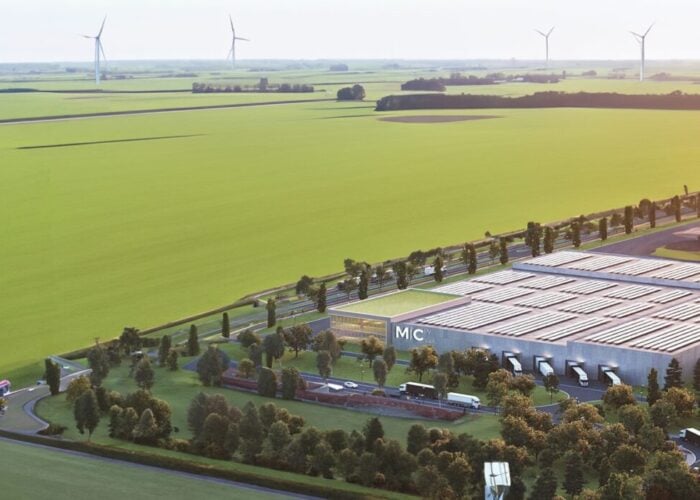The German solar industry’s research and development efforts into advanced solar cell technology will be given a boost of €100 million, after Chancellor Angela Merkel’s cabinet approved plans, according to Reuters. The move was made, according to the report, to weaken resistance by members of the lower house of parliament (Bundesrat), particularly from eastern states such as Thuringia, Saxony and Saxony-Anhalt, to a proposed 16% extra solar feed-in tariff cut. There are a a significant number of PV manufacturers located in these regions, and many have openly opposed the FIT cut suggested by Merkel’s government.
Since the tariff cuts were proposed, the German government has reiterated that the country’s PV manufacturers and equipment and materials suppliers would need to retain a competitive position against lower-cost manufacturers in China and Taiwan by continued investments in R&D.
Try Premium for just $1
- Full premium access for the first month at only $1
- Converts to an annual rate after 30 days unless cancelled
- Cancel anytime during the trial period
Premium Benefits
- Expert industry analysis and interviews
- Digital access to PV Tech Power journal
- Exclusive event discounts
Or get the full Premium subscription right away
Or continue reading this article for free
Indeed, in general terms a 10% improvement in c-Si cell conversion efficiency can translate into a 9% reduction in the cost per watt. The aim of the government is to boost R&D funding to enable German PV producers to keep ahead in the performance stakes by several technology cycles, negating the lower cost modules from China and Taiwan that in general have lower watt performance levels.
There are several fundamental problems with this strategy, not least the amount being offered, which we can only assume at this point will distributed over several years. Not only is €100 million insufficient to retain an industry technology leadership, it pales into insignificance when you look at the resources China is focusing on PV R&D and government willingness to support just Suntech and Trina Solar with loans from the China Development Bank of US$11.72 billion!
Of course these sums of money are not being spent on R&D alone but in continued capacity expansions, project finance for utility-scale solar projects, etc…However, leading Chinese producers are fully aware that they also need to close the performance gap with German producers and are continuing to purchase next-generation equipment from European suppliers that enable such advancements to be made.
This means that R&D spending in Germany–and Europe as whole, for that matter–would need to accelerate and maintain something like a three- to four-year performance advantage to clearly differentiate from Asian competitors. However, the performance advantage may have to be wider once the major Chinese producers start hitting 2GW and above manufacturing outputs, as scaling economies would see rapidly decreasing production costs.
That could be multiplied further should German manufacturers not keep in relative step with capacity expansions of overseas rivals as scale, plus performance is an essential part of the armoury required to remain competitive. Furthermore, R&D expenditure of PV equipment suppliers in Europe has traditionally been in the low single-digit range as a percentage of sales. In the semiconductor industry, equipment suppliers have consistently been required to spend in the 20% range to offer leading-edge tools and processes as well as productivity and yield improvements to remain competitive.
Significant changes to spending behaviour would be required across the supply chain to support German PV manufacturers. Far more attractive R&D tax credits would need to be in place compared to those benefits currently employed, to support greater R&D spending.
Perhaps the biggest problem actually relates to notion that focusing on R&D keeps German PV manufacturers actually manufacturing in Germany, while remaining competitive.
Looking at the semiconductor industry in Europe as an example, long-term R&D funding from the EU has not kept semiconductor manufacturing in Europe. Companies have both shifted a greater percentage of production to lower-cost regions and/or shifted leading-edge production to foundries based in Taiwan and become virtually fabless in operation or asset-lite or fab-lite in nature.
As technology advances increase in complexity and cost, the trend has been that more and more of the real R&D needs to done where the manufacturing occurs. The distance between the two operations impacts technology migration timescales as well as implementation costs, just to mention a few of the key aspects.
The result has been that much of the R&D funding from the EU has actually directly benefited Asian foundries as they not only get the manufacturing of advanced products and the jobs associated but their own R&D investments are less due to being indirectly subsidised by the EU funding!
The German PV industry has already seen its biggest cell producer Q-Cells close trailing-edge production lines in Germany and establish bigger and more advanced operations in Malaysia to retain cost competitiveness. They have even gone further by establishing foundry-like operations in an outsourcing deal for module assembly, also in Malaysia with Flextronics.
It can be assumed that Q-Cells would be a current beneficiary of Merkel’s millions offered in R&D, but what is the long-term return for the German government and its citizens?
Due to the drastic module price declines seen in 2009, many German distributors and larger installers have rushed to purchase nonbranded modules from Chinese producers under OEM contracts. Companies such as JA Solar and LDK Solar are rapidly expanding module production to the 1GW level and above to meet demand for OEM modules, with the majority of that business conveniently described by the producers as coming from Europe. But the reality is that much of this product demand is coming from Germany.
Ironically, the proposed cuts to the tariff due in July will only increase the rate of adoption of such modules, something that R&D funding on its own will not stop. Indeed, it also shrinks the available market for ‘Made in Germany’ modules in the country, as the downstream supply chain needs to compete against low-cost Chinese-branded products.
‘Made in Germany’ modules may not simply disappear but they are already becoming a smaller percentage of the installations in the country. Over time that means less manufacturing capacity expansions in Germany and less need for the German government to fund R&D as the returns in the form of manufacturing jobs diminish.
This is the current state of affairs in respect to the semiconductor industry in Europe and its fight to obtain renewed R&D funding from the EU. Politicians simply don’t like giving money away when the potential job generation is low, doubtful, or simply nonexistent. Big money allocation requires big job number generation.
The German PV industry is therefore asking for trouble down the road should the R&D funds not deliver the job creation and a likely result that future needed funding is drastically reduced or stopped altogether.
Merkel’s millions may well be viewed as a form of inducement to politicians in the Bundesrat to agree to tariff cuts, but surely this is actually a poison pill for those politicians with stakes in the PV industry and German PV industry as a whole?






